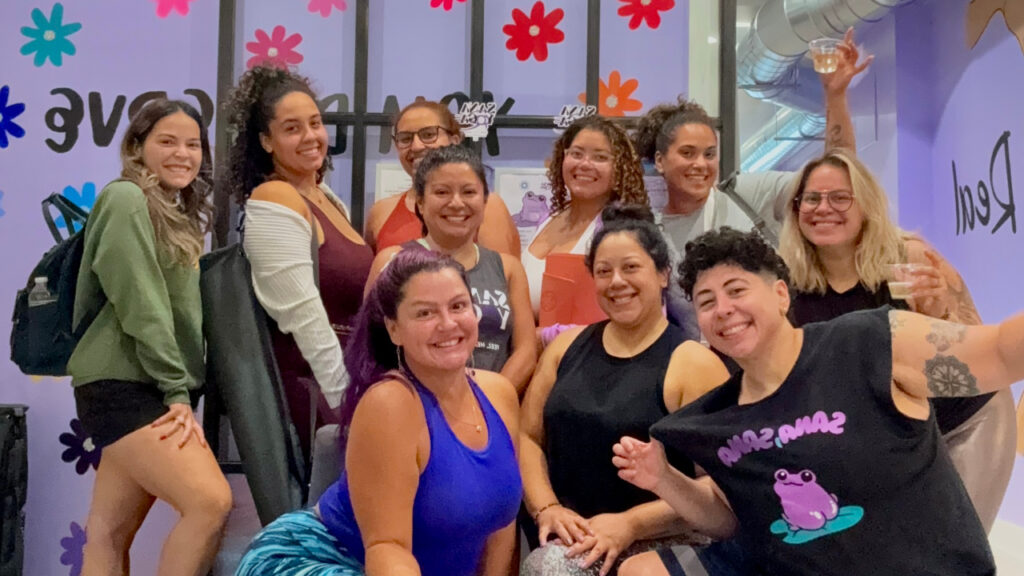New Data Shows 71% of Latino Gen Z and Millennials Have Eating Disorders. Only 5% Are Getting Help
A new nationwide survey from Equip reveals an alarming truth: 71% of Latino Gen Z and Millennials reported disordered eating behaviors in the past year, but only 5% are in treatment or recovery. The data comes from nearly 1,000 Latino-identifying respondents across the U.S., and it confirms what therapists and patients have been saying for years: eating disorders are not a “white, rich girl” issue. They’re a Latino issue too, shaped by stigma, silence, and cultural contradictions.
Eating disorders are rising, but treatment is out of reach
The gap between prevalence and care is staggering. According to Equip’s findings, restriction, binge eating, and water loading were the most common disordered behaviors, yet only 12% of respondents reported ever receiving a diagnosis. Bilingual therapist Ana Gardner told FIERCE that stigma plays a massive role: “Many Latino families still view therapy as a sign of weakness. Eating disorders are, unfortunately, dismissed as vanity or lack of willpower rather than recognized as severe mental health conditions.”
Gardner added that structural barriers compound the problem. Many families lack insurance coverage for mental health care, and even with insurance, eating disorder treatment is under-covered. For families already struggling to meet basic needs, specialized care can feel unattainable.
How culture shapes care in Latino families
Culture is both a protective force and a source of strain. Gardner explained that Latino families’ emphasis on collective support can aid recovery, but also complicate it. “Respect for elders can make it hard for young people to set boundaries with family members who make weight-related comments or push food in triggering ways,” she said.
According to the survey, food itself carries dual meanings: 85% said it brings people together, and 78% tie it to tradition. However, 55% also reported experiencing teasing or discrimination related to weight. “It’s so complex in Latino families because food is such a central expression of love and cultural identity,” Gardner said. “When weight comments get tangled up with food preparation and sharing, it can create impossible double-binds.”
The myth of eating disorders as a “white problem”
Therapist Adriana Lindenfeld stressed that the stereotype about who develops eating disorders is deadly. “When we limit our understanding of who gets eating disorders, we render an entire population invisible, delaying diagnosis and denying life-saving treatment,” she told FIERCE. She added that Latino patients often don’t recognize their own symptoms because they don’t see themselves represented in awareness campaigns or treatment spaces.
Healthcare providers also perpetuate this invisibility. Lindenfeld said, “Providers, teachers, and even family members are less likely to recognize eating disorder symptoms in Latino patients because these conditions ‘don’t fit’ their mental picture.” That invisibility not only delays diagnosis but leaves patients feeling “not sick enough” to deserve help.
External discrimination meets internal pressure
The Equip survey also found that nearly half of respondents reported discrimination tied to body size. Lindenfeld explained that these external pressures intersect painfully with internal cultural expectations. Latino clients often describe being caught between mainstream discrimination and community ideals that push conflicting body standards. “For many Latinas, there’s particular pressure to be both thin to fit American beauty ideals and curvy to fit cultural ideals of femininity, creating an impossible standard,” Lindenfeld said.
In her practice, she helps clients separate their self-worth from these messages and navigate body comments in ways that preserve both their cultural ties and their recovery.
A message to Latino Gen Z and Millennials
For young Latinos caught between family silence and social media pressures, Lindenfeld offered a message: “Your healing doesn’t require you to choose between your cultural identity and your well-being. You can honor both.”
She emphasized that recovery means learning to navigate multiple cultural contexts without sacrificing the self. “You can love your family’s cooking traditions while eating in a way that supports your mental health. You can respect your elders while setting boundaries. True healing empowers you to embrace the entirety of your identity, fostering a resilient and authentic self.”
The Equip survey makes one thing clear: eating disorders in Latino communities are real, urgent, and under-addressed. To close the gap, providers must move beyond stereotypes and build treatment that reflects the cultural realities of the people most affected.




